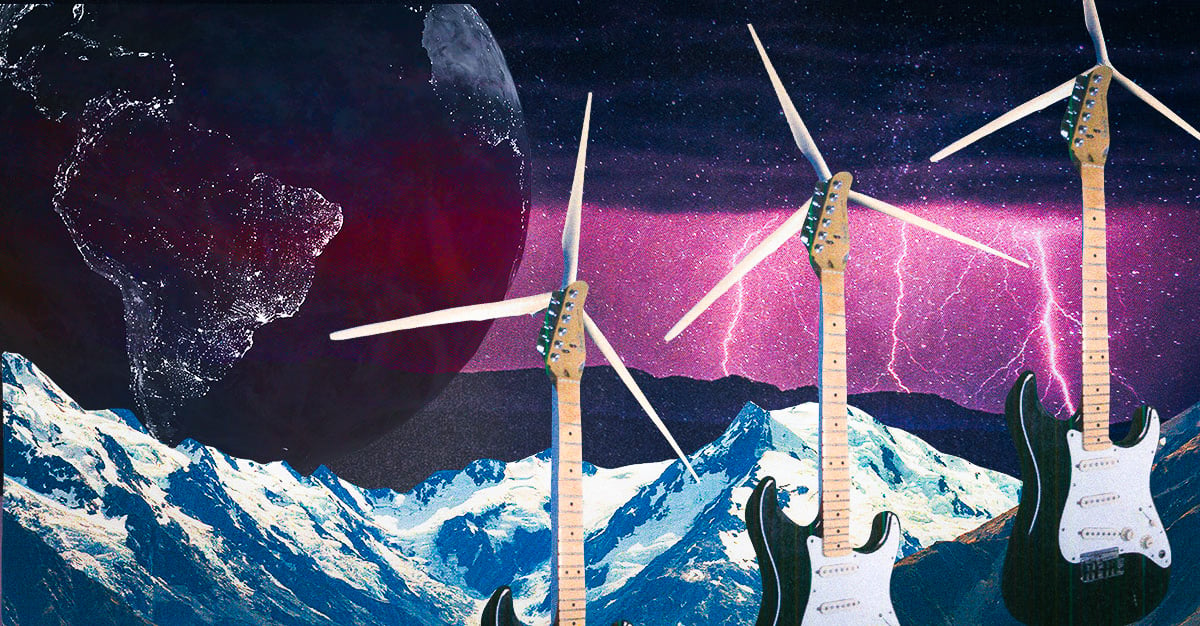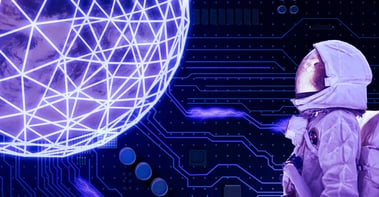Thomas Boermans, Head of Foresight at E.ON and passionate Energy Transition Manager, talks in our Innovation Rockstars Podcast about his mission to think, plan and implement the energy transition - at scale!
E.ON is an international energy company offering smart grids and customer solutions that further sustainable energy transformation. In Europe, where the organization is based, E.ON is focused on uniting communities and empowering them to create a greener, cleaner world – an endeavor, which is as “pressing as it is meaningful,” says Innovation Rockstar guest Thomas Boermans.
Head of Foresight at E.ON, Thomas Boermans has 20 years of expertise in energy efficiency, renewables, and climate policy for consultancies, companies, national governments, and the European Commission. In his current role, Thomas is helping to provide insights on future opportunities and risks in the energy world to “build a bridge into the future that we can walk over".
Thomas joined us on the Innovation Rockstars Podcast to share the role foresight has in thinking, planning, and implementing the energy transition.
For 🎬 the full video podcast or for 🎧 pure audio enjoyment, tune in on Spotify or Apple Podcasts.
Understanding the "Supercycle" of the Energy Transition
Asked about the Kondratiev wave theory, Thomas sees parallels of the energy transition to a so-called “supercycle”, or an economic phenomenon shaped by technological change over 40 to 60 years. These cycles consist of alternating intervals of fluctuating growth with periods of expansion, stagnation, and recession.
Thomas explains that we are however not at the start of this cycle. We are at a point where we need to focus on scale, more specifically, massive long-term infrastructural investments, to further the energy transition (he points to the CAPEX or capital expenditure supercycle as an example).
Critical Trends in Renewable Energy
In his role at E.ON, Thomas develops foresight based on the analysis of trends in technology, markets, policy & society. He reveals what he considers to be key trends that will influence the future of renewable energy:
Sustainability
The energy transition is not only about renewable energy, says Thomas. It may sound like a no-brainer, but this gets often forgotten. Sustainability is important in all aspects including value chains and delivering customer value – for example, employing a circular economy model to use waste heat from industry to power cities.
Convenience
There must also be a better understanding of what convenience means to end-users when supporting them in adopting energy services. It is vital to know that also B2B clients need convenience, in a sense that services perfectly fit in their business processes. This points e.g. to digital assistance in purchasing and using energy services.
Resilience
Finally, Thomas highlights resilience as a key trend that the COVID-19 pandemic has also highlighted. Resilience of energy infrastructures is also needed against cyber threats or increasingly extreme weather conditions that are connected to climate change.
Strategic Foresight at E.ON
E.ON’s Strategic Foresight does its work by asking questions such as: "Which kind of services will grow? Which ones may also not be that much in demand? What are possible disruptive developments that could occur? Which is the stuff we should actually put our bucks on?"
Thomas says that, in contrast to simply answering these questions in the present moment, Strategic Insight looks forward and moves beyond one-off analyses. This creates a constantly evolving picture.
Overcoming Challenges In Developing Foresights
Thomas speaks about his aim to work and collaborate with colleagues to find focus and build momentum. He elaborates on some of the challenges he and his team have faced in starting foresight activities from scratch and how they have overcome them.
Finding a Strategic Approach
Initially, Thomas and his team tested the approach to put ideas forward to the Innovation teams. Yet they realized that this partly meant stepping on innovations' feet, without adding an additional angle. He discusses the process of coming to a more strategic approach of supporting Innovation as a further tailwind.
Finding Influence and Consensus
When asked about how he and the team reach consensuses, Thomas emphasizes the importance of understanding people’s behavior without judgment. He believes that understanding the many aspects that influence people helps us understand what they are likely to do in the future.
To find consensus, Thomas refers to several groups and formats where the team holds discussions. The team has also created the Foresight Circle, a space to discuss dedicated topics. Conclusions from ongoing analysis and these gatherings are put forward to the board and supervisory board.
Sometimes people ask me, “So Thomas, what is what is happening in the future?” And I say, “Whoops, nothing's just happening. It's people who do it, it's you and me. It's people who make decisions, start or stop things.”
Thomas Boermans, E.ON
Moving Toward Action
Thomas explains that identifying people’s influences makes it easier to move towards clarity and therefore, insights and the authorization of strategic action. For example, insights and trends might help the venture capital team look for certain start-ups.
He also highlights specific formats or “anchor products” used to deliver such insights such as the Trend Radar. They provide reference to what is happening in energy, what markets are doing as well as competitor activity, allowing individuals to use the information to arrive at their own opinions
Actually, these kinds of changes in opinion, that's what I'm striving for in our work. Because if we all always have the same opinion, it will for sure, be old fashioned and actually wrong after some time, even if it was right in the beginning. Let's say this is kind of understanding and changing opinion, that's actually quite powerful because it decides what people do on the long-term.
E.ON is driving the energy transition, also by using foresight. In his role, Thomas wants to continue introducing new ways of looking at the future and in doing so, creating value for the company. He says this develops from consistently linking insights from foresight to innovation, corporate strategy, and ultimately, business operations – forming a logical chain with a clear objective to create win-win situations with internal clients.
We thank Thomas for this insightful interview!



/Assets%20and%20Heros/nav-thumbnail-Gartner.webp?width=150&name=nav-thumbnail-Gartner.webp)







